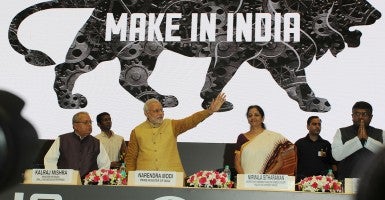This week marks the end of Narendra Modi’s first year as prime minister of India.
Elected with an unprecedented majority in Parliament, Indians had high expectations his economic reforms would resuscitate India’s economy and investment environment.
In democracies, the first year of an administration is typically when the most dramatic political and economic reforms are initiated. Ronald Reagan initiated his landmark tax cuts, and Margaret Thatcher defeated the U.K.’s striking coal miners and broke the back of organized labor during their first years in office.
As a former university professor accustomed to assigning grades this time of year, I’d have to assign the Modi government a C for its first year in office. Here are some of the highlights and shortfalls of his first year:
Victories:
- India is now the fastest-growing major economy, expanding 7.4 percent in the year ending in March, although analysts say the results were inflated by a new accounting methodology.
- Most economic indicators have improved. Inflation has plummeted, foreign exchange reserves have expanded, and India’s fiscal and current account deficits as a share of gross domestic product have fallen.
- There were none of the “big bang” broad-based deregulations global investors had hoped for, but the prime minister gets credit for allowing more foreign direct investment in insurance, defense and other sectors.
- After backing out of a World Trade Organization agreement to simplify customs procedures, India eventually backed down and agreed to the terms as long as they were phased in.
Shortcomings:
- The government has avoided privatizing its inefficient state-run banks and most companies, discouraging foreign direct investment in related sectors.
- After deciding not to appeal the tax cases for Vodafone and Royal Dutch Shell, some foreign investors were slapped with retroactive taxes, which raised questions about whether anything actually had changed.
- Despite accelerated growth and lower inflation (largely a consequence of lower energy prices), India’s largest companies are expected to announce their weakest profit growth in more than five years for the fiscal year ending March 31.
- Although many factors beyond the administration’s control affect it, India’s benchmark stock index, the Sensex, is among the worst performing major Asian indexes this year, gaining only 0.5 percent through Monday.
Given its majority in Parliament and general sense of optimism throughout the country, the current government could have done much more in its first year. Let’s hope the next year brings more positive surprises.




























